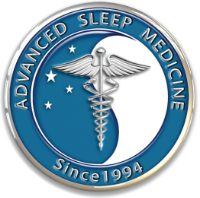
In the past ten years, increasing numbers of patients have adopted high deductible health plans (HDHPs). On one hand, this means an economic break for the consumer because of reduced up-front costs for health insurance. However, in the event of a catastrophic illness or accident, the insurance holder will be on the hook for a large chunk of the treatment.
What is a high-deductible health plan (HDHP)?
As part of their health insurance, the plan holder must pay a monthly premium, or flat rate, for their coverage. When a medical expense arises, he will likely pay 100% of the cost of the treatment until he reaches a certain dollar amount (known as a deductible). Once he has paid the deductible, the insurance steps in and assumes a certain percentage of the cost for remaining treatment.
High deductible health plans (also known as consumer-driven health plans) are often attractive to customers because of their low premiums. However, the high deductible means that if a serious accident does occur, the holder will be liable for an equally large medical bill (including the full amount of the deductible).
According to CBS News, the average individual deductible for the lowest-coverage tier of Obamacare plans is $5,081 per year.
The rise of HDHP plans
The amount of patients—particularly employees—on high deductible health plans has risen considerably since 2006. Then, 8% of employees had a HDHP; now, 30% do.
This is largely a result of companies’ shift towards offering more such plans (or even offering them exclusively). In 2013, 66% of large employers offered a HDHP with an expected increase to near 80% in 2014. The percentage of large employers offering HDHPs as their only option was 15%--a figure that has doubled since 2010. They are now the second most common type of health plan provided by employers.
These statistics support the widely drawn conclusion that companies are steadily moving towards offering high deductible health plans to workers in an attempt to reduce health insurance costs.
Another reason for the upswing is that the recently enacted Affordable Care Act requires health insurance, and people are quick to notice that HDHPs have the lowest initial costs.
How to make the most of your HDHP
An HDHP can be a good option for health people for which a serious medical condition is unlikely. If you have few medical expenses throughout the year, you are saving a large amount of money by avoiding a hefty premium.
Another perk of an HDHP is the option to open a health savings account (HSA). This tax-advantaged account can be funded by both employers and employees up to a certain government-determined amount. The money in the account can be used to pay for medical-related expenses, such as prescription medications and procedures, and the holder saves money in the form of taxes he does not have to pay.
Even if you do end up having to pay your deductible to cover medical expenses, look on the bright side. Once that amount is met, you will be able to receive medical procedures at a largely discounted rate until the end of the year. Make sure to take advantage of your year-end benefits!
Is a high-deductible health plan right for you? What do you think of employers’ increased emphasis on this type of coverage and Obamacare’s role in the transition? Let us know in the comments!



